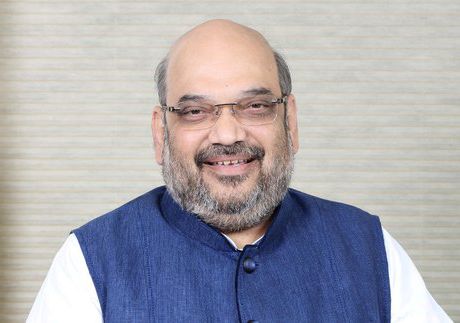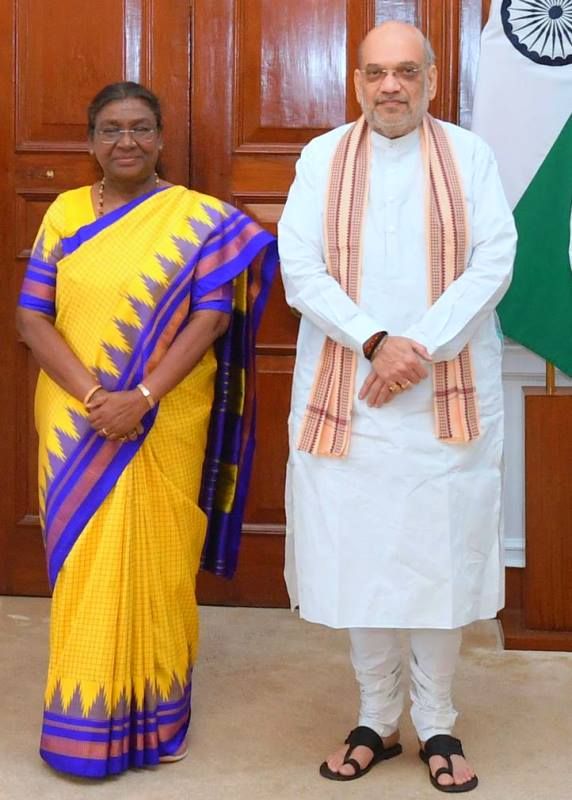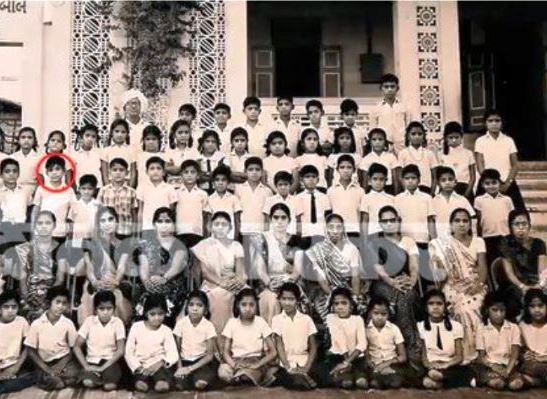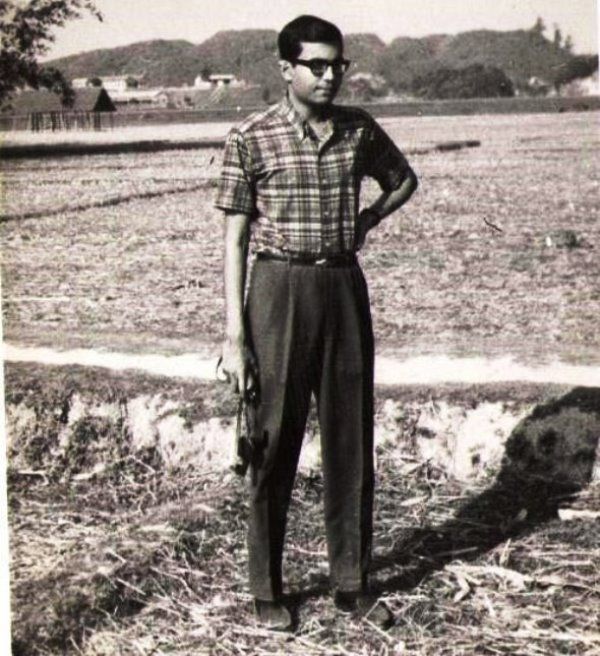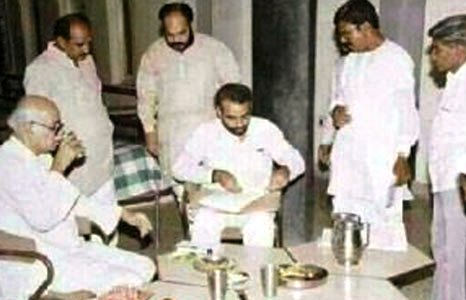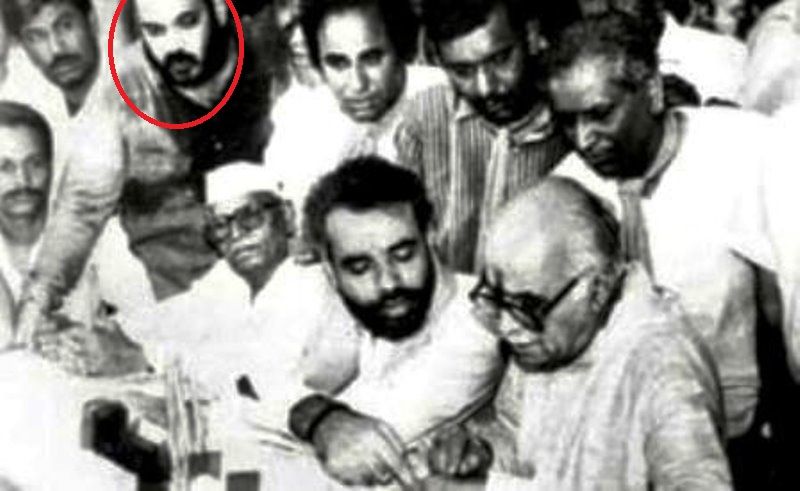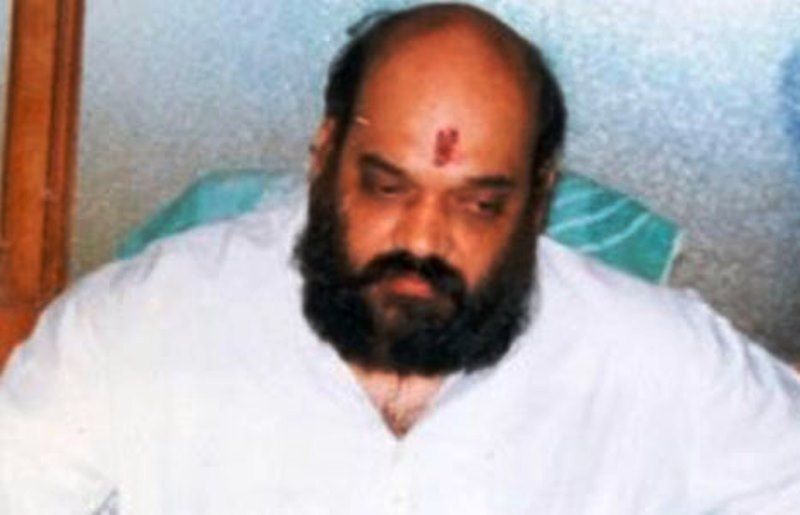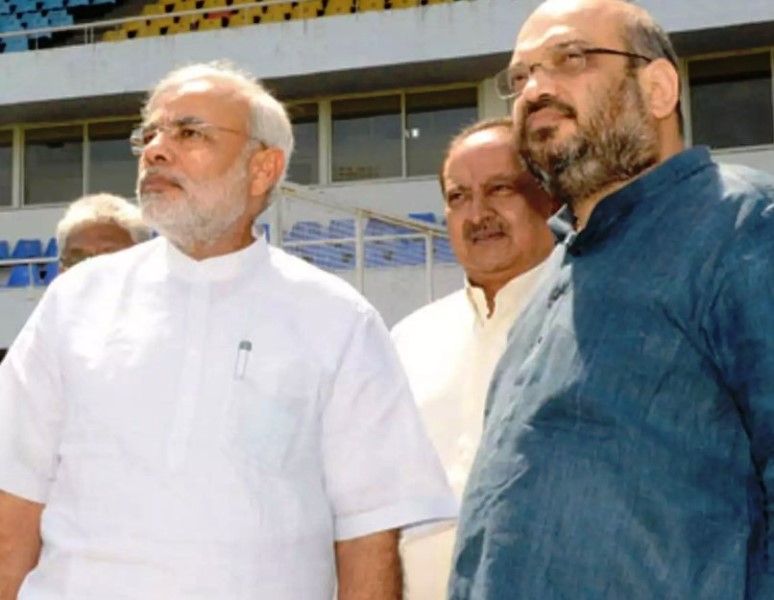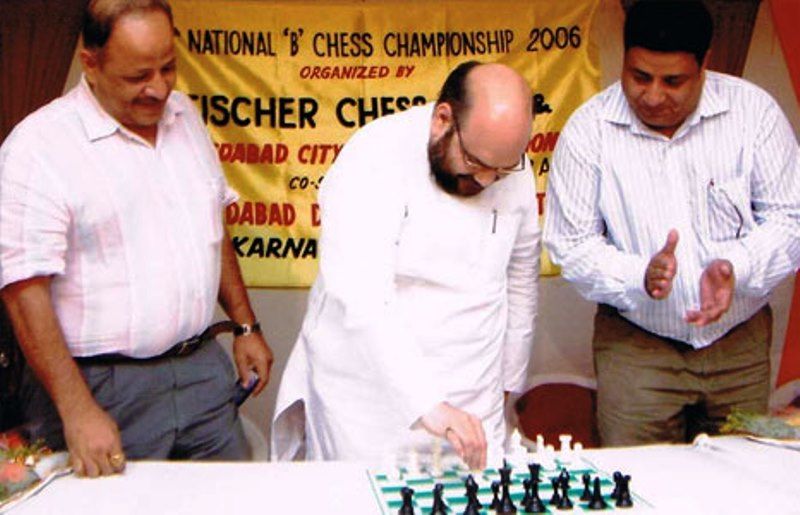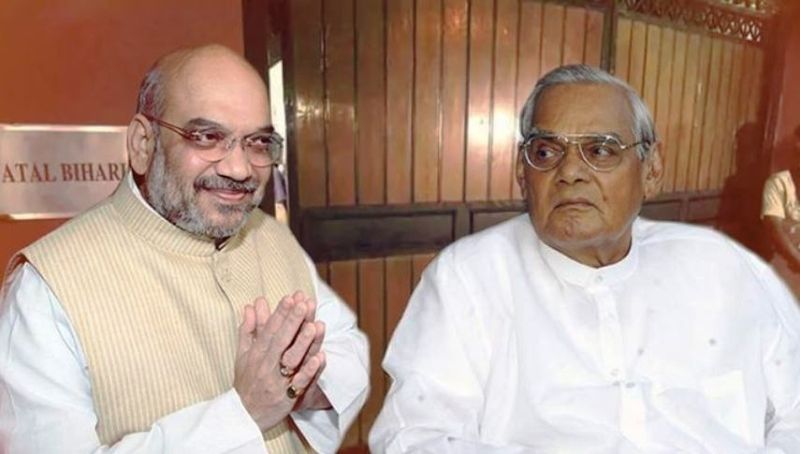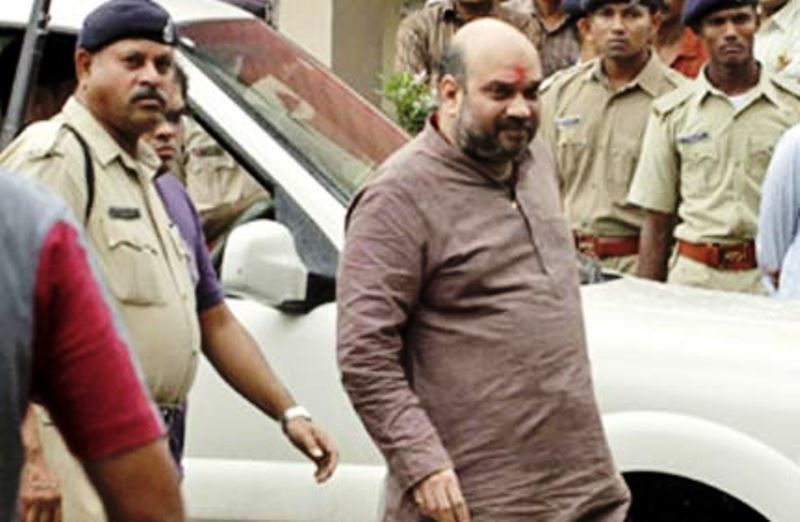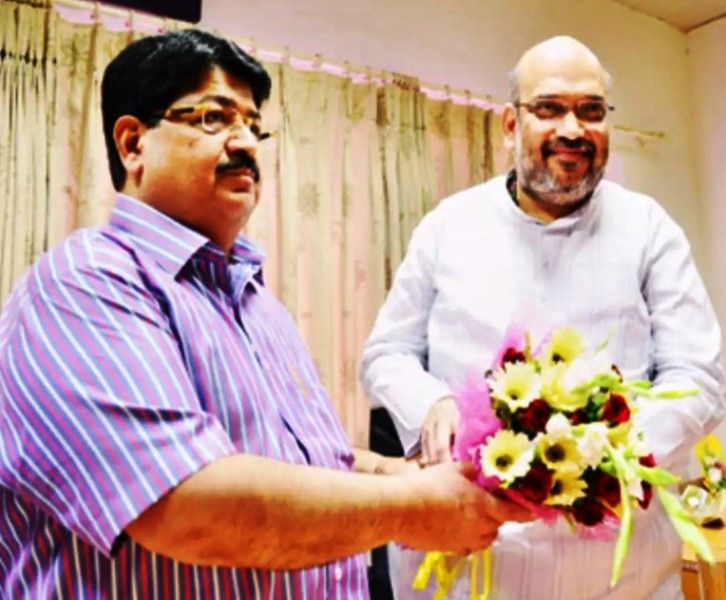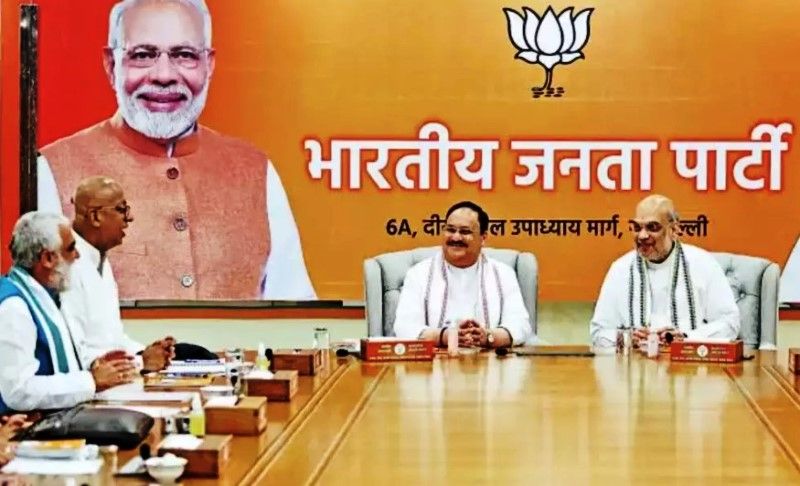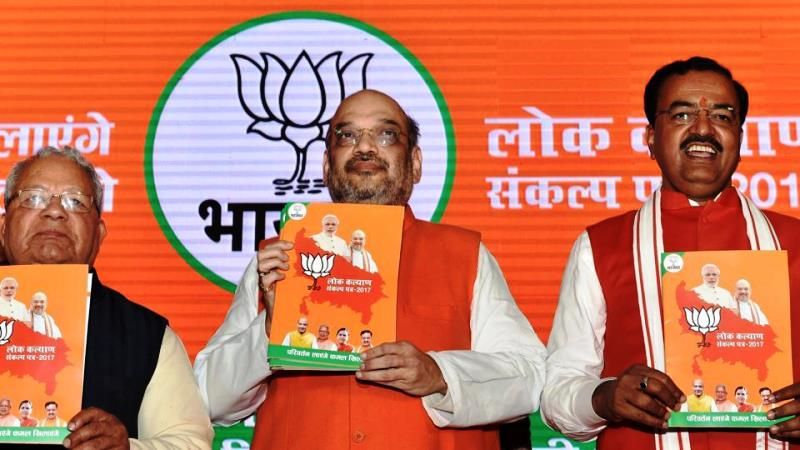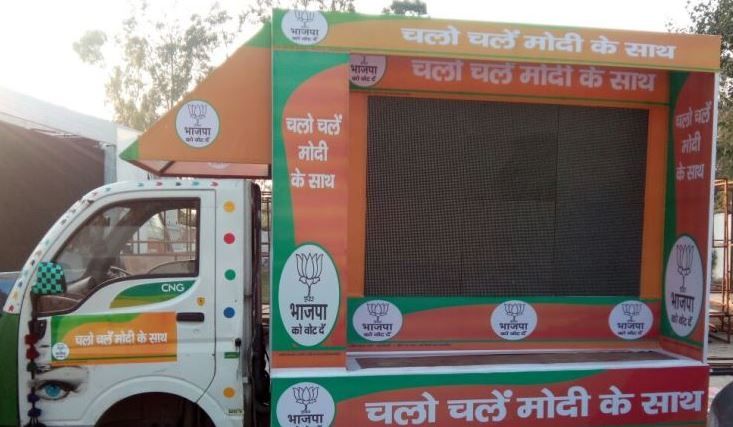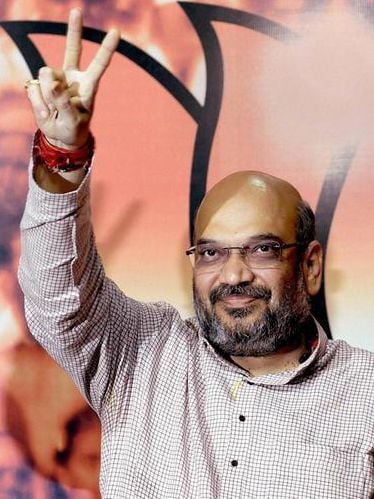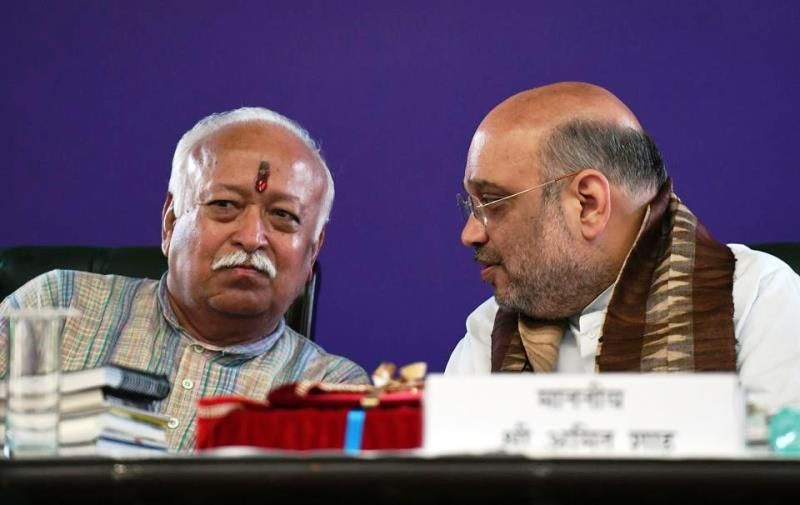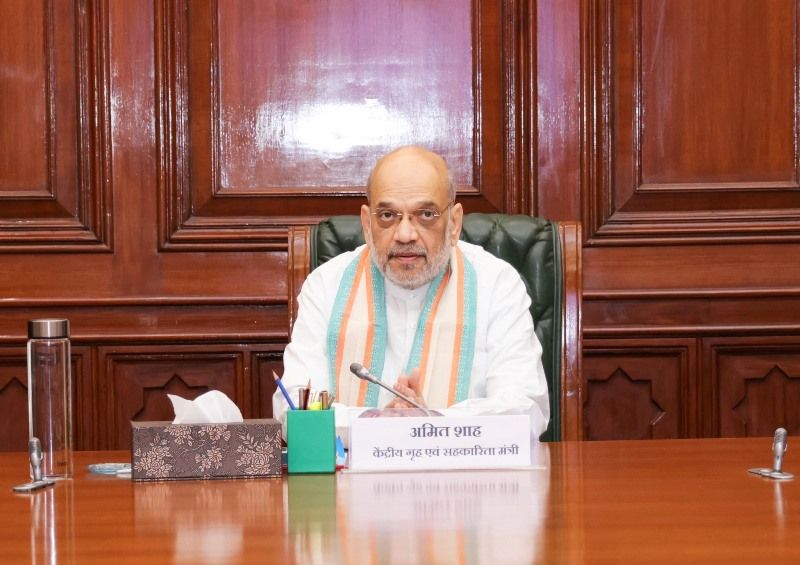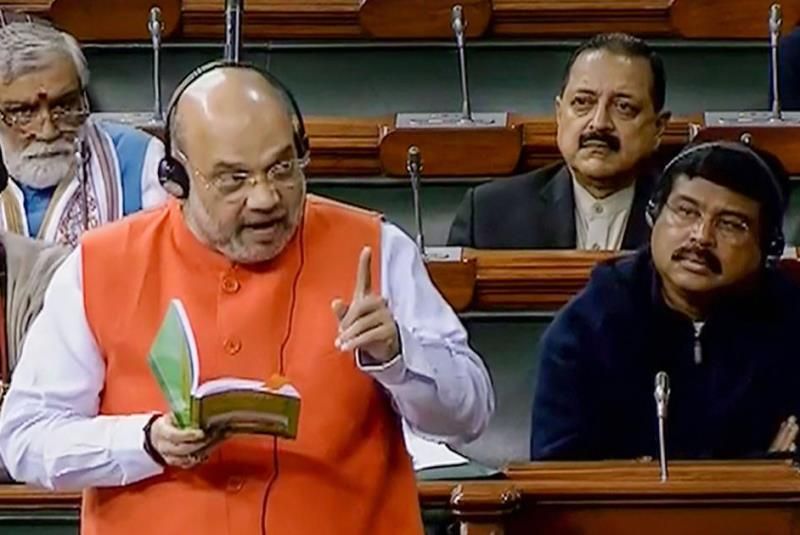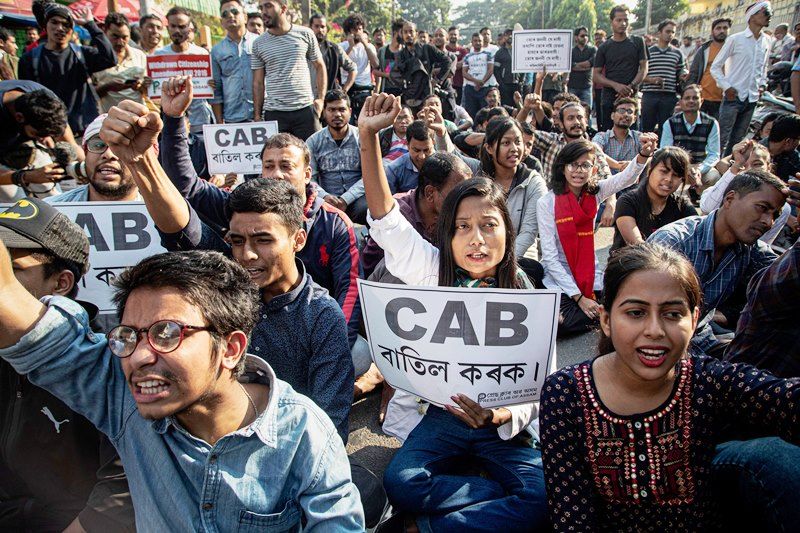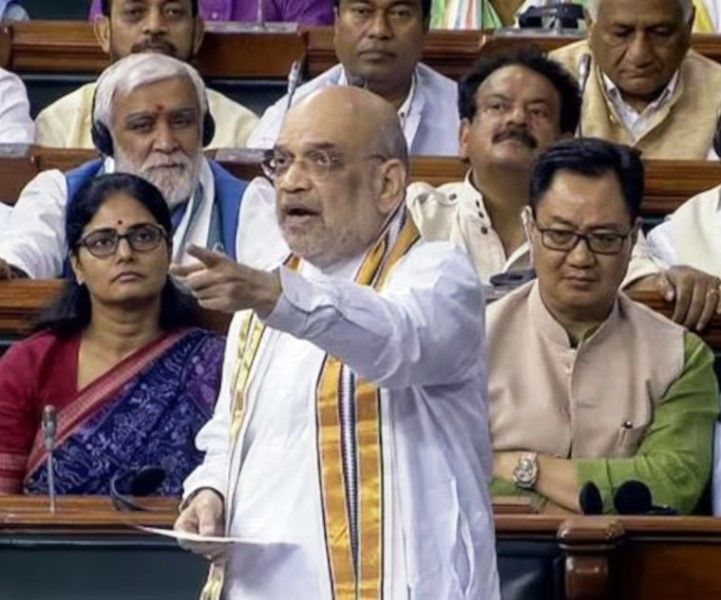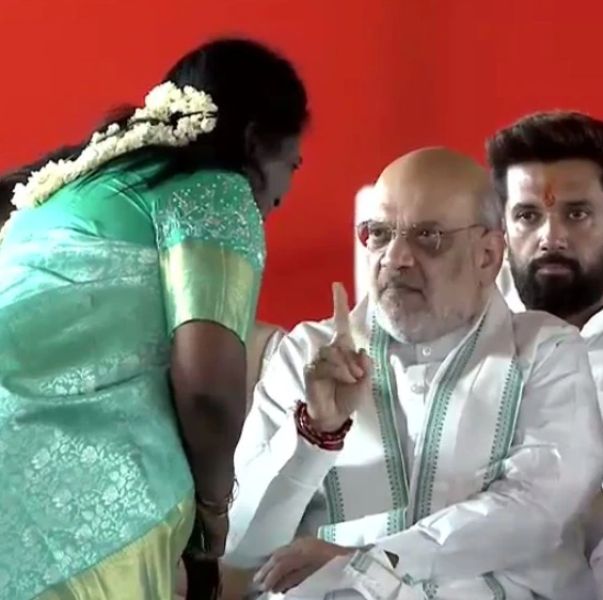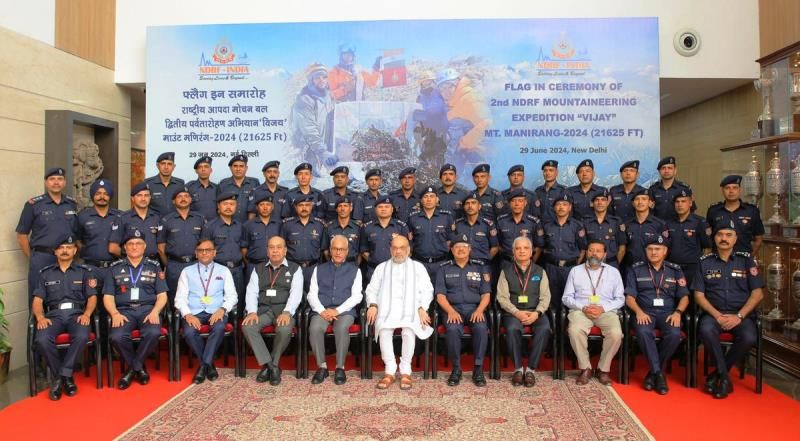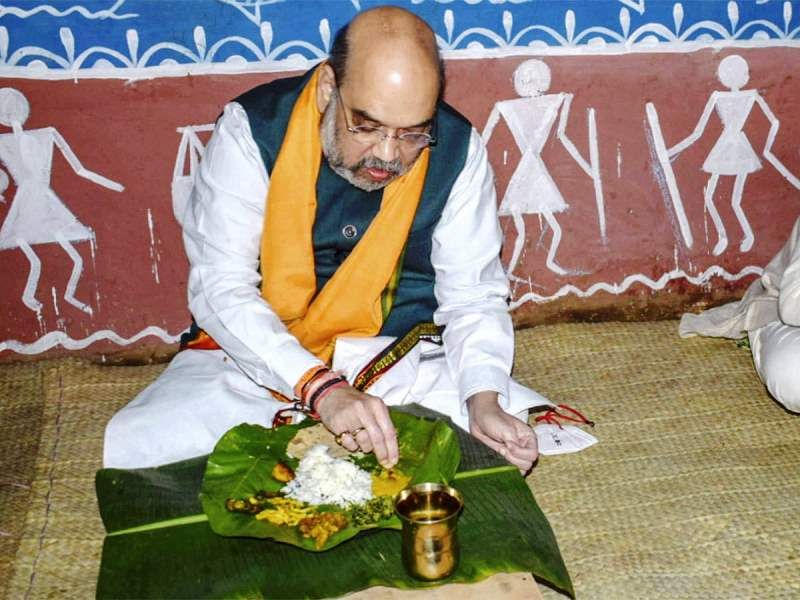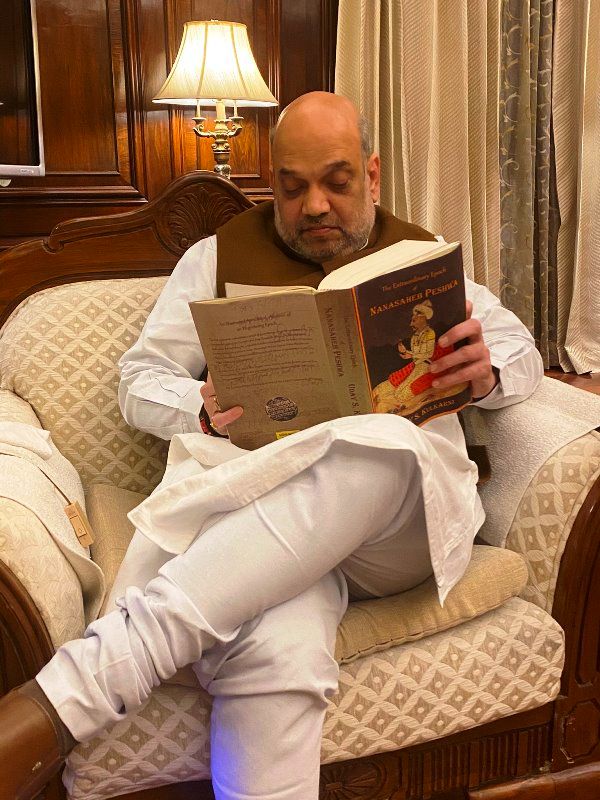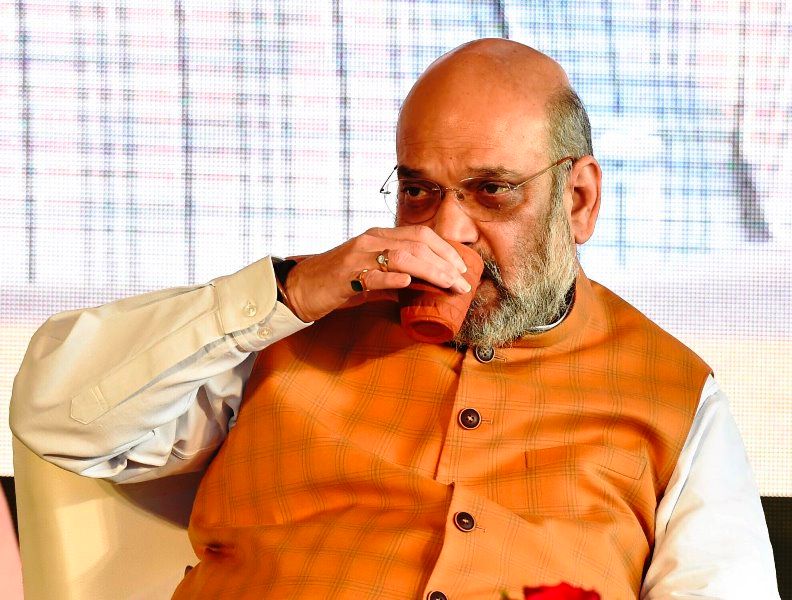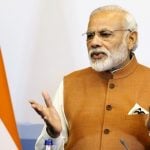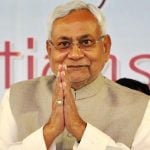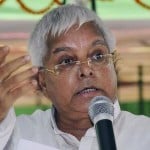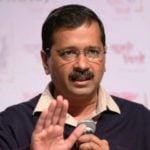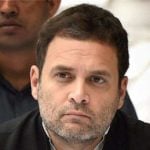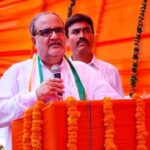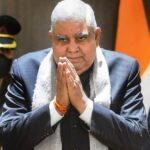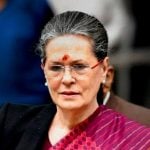Amit Shah Age, Caste, Wife, Children, Family, Biography
Quick Info→
Age: 60 Years
Hometown: Ahmedabad, Gujarat
Wife: Sonal Shah
| Bio/Wiki | |
|---|---|
| Full Name | Amitbhai Anilchandra Shah |
| Names earned | Modern-day Chanakya |
| Nickname(s) | • Amitbhai • Mota Bhai |
| Profession | Politician |
| Famous for | • Being one of the most prominent political leaders in India • Being the Home Minister of Gujarat • Being the 26th Home Minister of India |
| Physical Stats | |
| Height (approx.) | 5' 6" (168 cm) |
| Eye Colour | Dark Brown |
| Hair Colour | Salt and Pepper (Semi bald) |
| Politics | |
| Political Party | Bharatiya Janata Party (1987-present)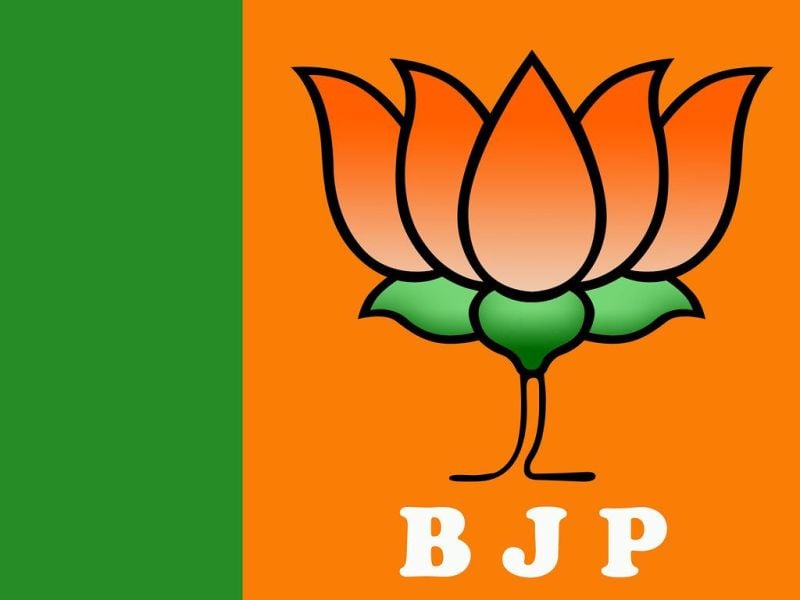 |
| Political Journey | • Joined BJP (1987) • Joined Bharatiya Janata Yuva Morcha (BJYM) (1987) • Became Ward Secretary of the BJYM • Became Taluka Secretary of the BJYM • Became State Secretary of the BJYM • Became Vice President of the BJYM • Became General Secretary of the BJYM • Became Secretary of BJP’s Ahmedabad unit (1989) • Contested and won assembly by-elections held in the Sarkhej constituency (1997) • Became National Treasurer of the BJYM (1997) • Contested and won assembly elections from the Sarkhej constituency (1998) • Became State Secretary of Gujarat BJP (1998) • Became State Vice President of the Gujarat BJP (1999) • Contested and won assembly elections from the Sarkhej constituency (2002) • Held the Home, Law and Justice, Prison, Border Security, Civil Defence, Excise, Transport, Prohibition, Home Guards, Gram Rakshak Dal, Police Housing, and Legislative and Parliamentary Affairs Ministries (2002-2007) • Contested and won assembly elections from the Sarkhej constituency (2007) • Contested and won assembly elections from the Naranpura constituency (2012) • Became National General Secretary of the BJP (2013) • Became BJP General Secretary (2014) • Served as the 10th National President of Bharatiya Janata Party (9 July 2014 - 20 January 2020) 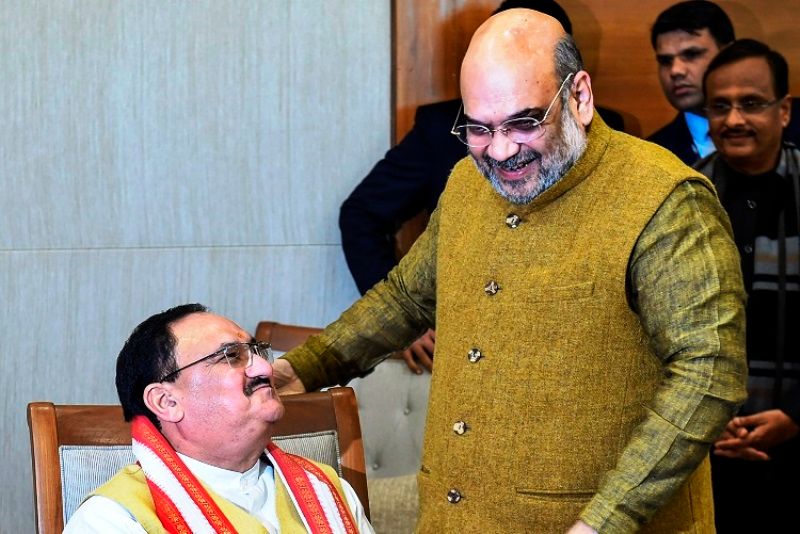 • Became 3rd Chairperson of National Democratic Alliance (9 July 2014 - present) • Served as the Member of the Rajya Sabha from Gujarat (19 August 2017 - 29 May 2019) 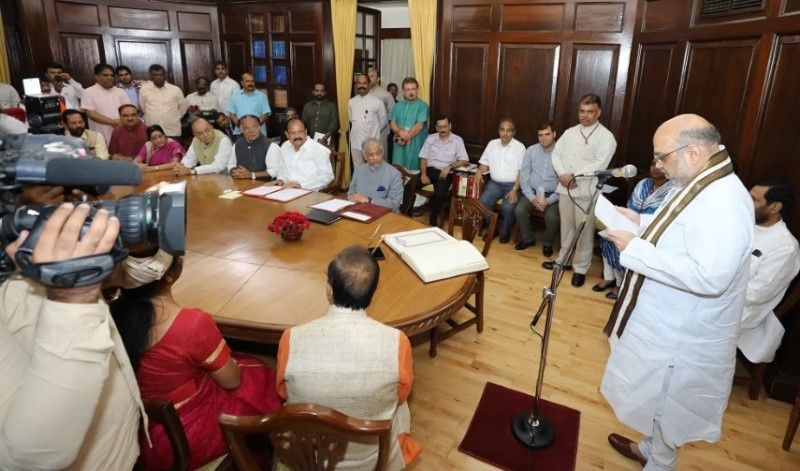 • Contested and won the Lok Sabha election from the Gandhinagar constituency (2019) • Became a Cabinet Minister (30 May 2019) • Served as the Minister of Home Affairs in the Union government (1 June 2019 - present) 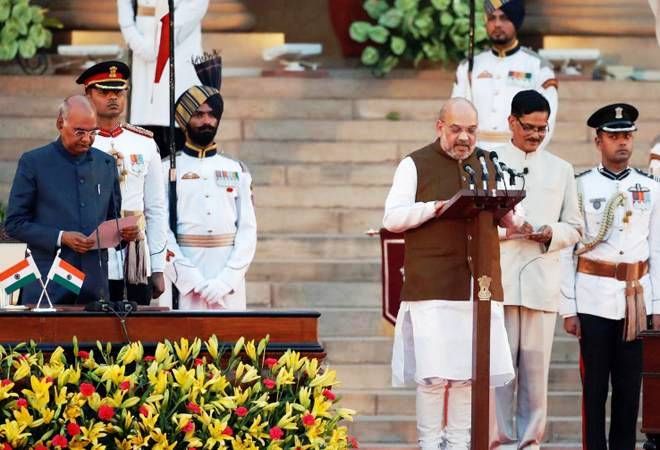 • Served as the Minister of Cooperation (7 July 2021 - present) 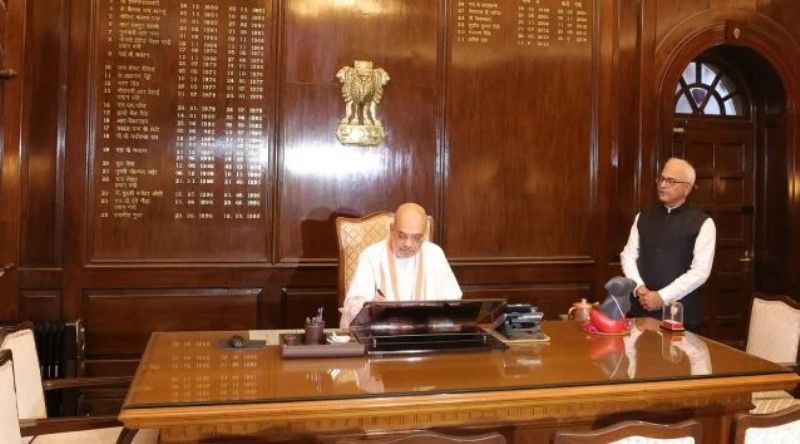 • Became Cabinet Minister in Modi 3.0 government (9 June 2024 - present) 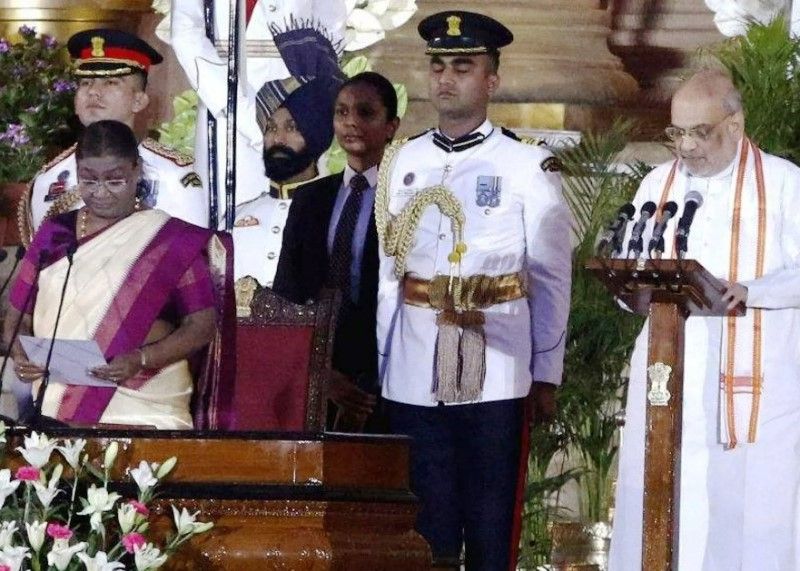 |
| Personal Life | |
| Date of Birth | 22 October 1964 (Thursday) |
| Age (as of 2024) | 60 Years |
| Birthplace | Bombay (now Mumbai), Maharashtra, India |
| Zodiac sign | Libra |
| Signature | 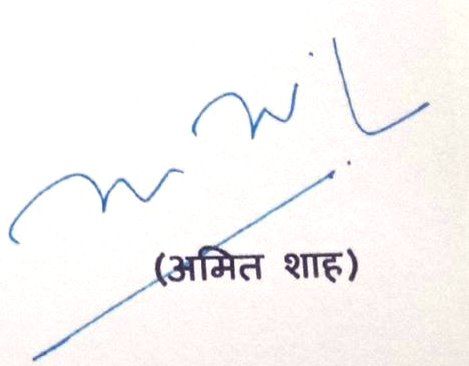 |
| Nationality | Indian |
| Hometown | Ahmedabad, Gujarat |
| School | • G.B. Shah Jyoti High School, Kanta, Ahmedabad (Class 12th - 1981) • Navrang Secondary School, Navrangpura, Ahmedabad (Class 10th - 1979) |
| College/University | C U Shah Science College, Ahmedabad |
| Educational Qualification | B.Sc. in Biochemistry |
| Religion | Hinduism |
| Caste | Baniya |
| Food Habit | Vegetarian |
| Address | 16, Royal Crescent, Behind Jalsa Party Plot, S. G. Highway, Thaltej, Ahmedabad, Gujarat - 380054 |
| Hobbies | Reading, Watching cricket, Playing chess, Indulging in social work |
| Controversies | 2002 Gujarat Riots After the 2002 riots, a case in a court of law was filed against Shah by the CBI for reportedly damaging the evidences and influencing witnesses in the 2002 Gujarat Riots. Former IPS officer Sanjiv Bhatt, in his 2015 petition in the Supreme Court, also accused Shah of playing an active role in shielding the Gujarat government's role in the 2002 riots. [1]The Economic Times Shah has also been accused time to time for shunting police officers and other government officials who spoke against the Modi-led Gujarat government in the court of law. However, with no prominent evidence against Shah, the case against him was scrapped in 2016. Sohrabuddin Sheikh Encounter Case In 2005, an FIR was filed against Amit Shah following the planned murder of Sohrabuddin Sheikh, his wife Kauser Bi, and witness Tulsiram Prajapati. It was alleged that Shah had ordered the police force to eliminate the trio on behalf of the marble industry owners in Gujarat and Rajasthan. Shah was arrested by the CBI in July 2010. The CBI's charge sheet claimed that two Rajasthani businessmen had paid Shah to deal with Sohrabuddin, who had been causing them trouble. Shah was granted bail three months after his arrest but was barred from residing in Gujarat. His entry into the state was only permitted in 2012. The case against Shah was later dismissed by Judge MB Gosavi, who ruled that Amit was the victim of political plotting by the then-ruling government. Thereafter, the case was brought before the CBI court, but due to a lack of evidence, it was dismissed. Ishrat Jahan Encounter Case Ishrat Jahan, a Muslim resident of Gujarat, was shot and killed by the Gujarat police in 2004 for her alleged links with the terrorist outfit Lashkar-e-Taiba (LeT). In 2013, 1 2009 audio tape of Amit Shah was made public in which he was reportedly heard instructing the cops to record the calls of an IAS officer and woman, who was connected with the Ishrat Jahan encounter case. Later, the father of the young woman refuted the claims of Shah tapping the call records. [2]Hindustan Times |
| Social Media | • Instagram • YouTube |
| Relationships & More | |
| Marital Status | Married |
| Marriage Date | 22 December 1987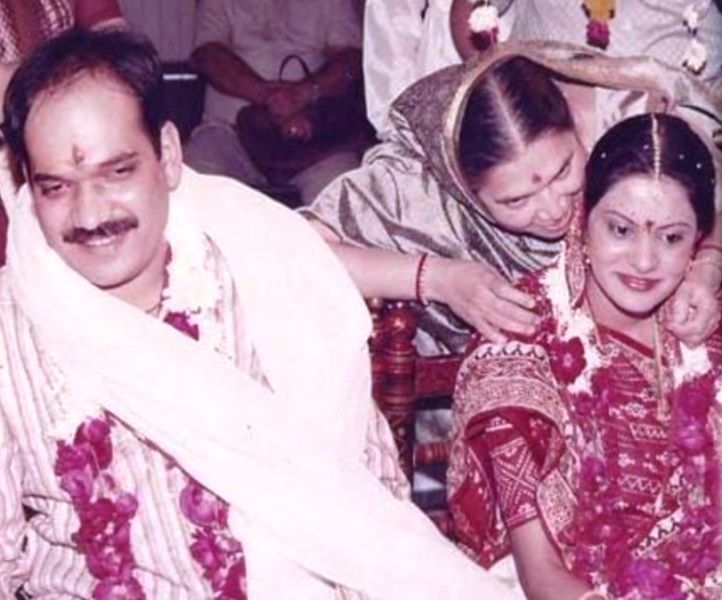 |
| Family | |
| Wife/Spouse | Sonal Shah (homemaker)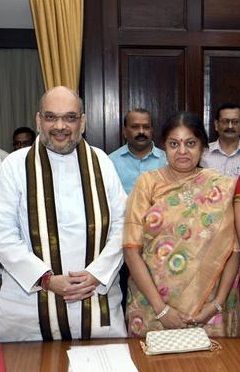 |
| Children | Son- Jay Shah (businessman, cricket administrator)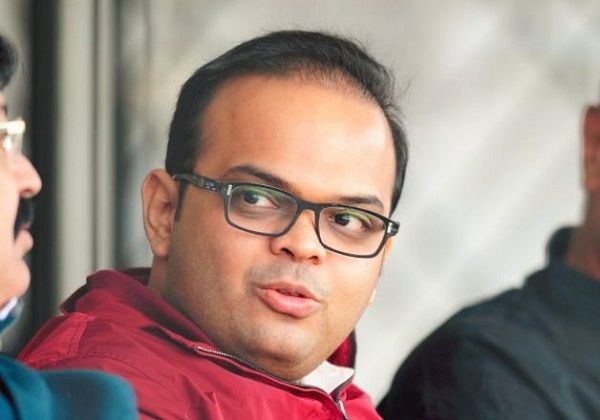 Daughter- None |
| Parents | Father- Anilchandra Golkaldas Shah (deceased; businessman) Mother- Kusumben Shah (died on 8 June 2010) 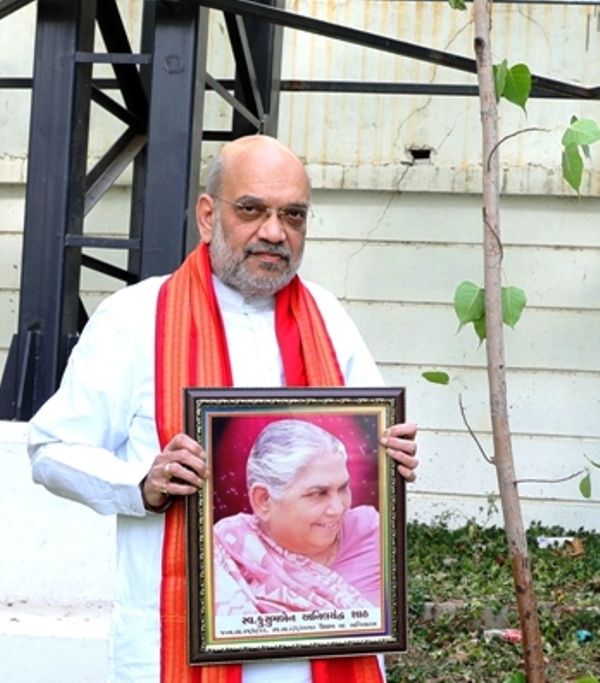 |
| Siblings | Sister(s)- 6 • Aarthi Shah 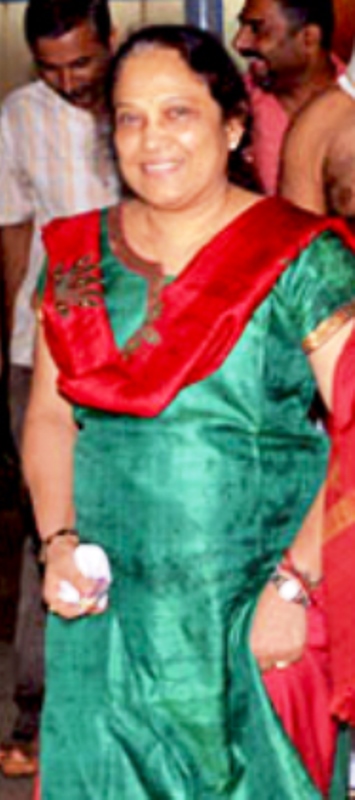 • Rajeshwari Shah (died on 15 January 2023 in Mumbai) 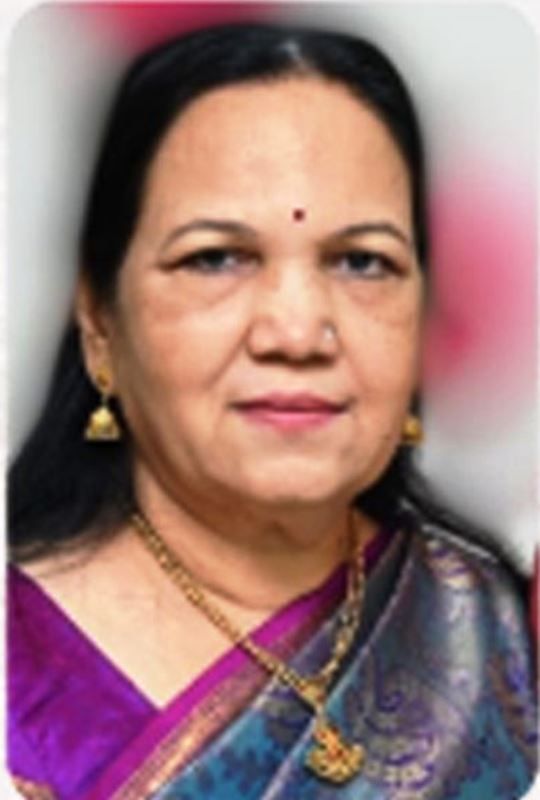 |
| Favourites | |
| Food | Poha topped with sev and lemon juice |
| Snack | Dhokla, Pakode |
| Politician | Narendra Modi |
| Style Quotient | |
| Car Collection | • 5 Toyota Fortuner • Toyota Land Cruiser (worth 1 crore) • Mitsubishi Pajero • Tata Safari |
| Money Factor | |
| Income | Rs 75,09,257 (2022-2023) |
| Assets/Properties (as of 2024) | Movable Assets • Cash Rs. 24,164 • Bank Deposits Rs. 1,90,07,063 • Bonds, Debentures and Shares in companies: Rs. 11,00,35,865 • LIC or other insurance Policies: Rs. 21,84,660 • Motor Vehicles Rs. 28,89,240 • Jewellery Rs. 72,87,680 Immovable Assets • Agricultural Land: Rs. 1,78,10,638 • Non-Agricultural Land Rs. 6,04,22,815 • Commercial Buildings Rs. 4,63,19,212 • Residential Buildings Rs. 3,86,21,395 |
| Net Worth | 29,54,25,695 (29.54 crore) (as of 2024) |
Some Lesser Known Facts About Amit Shah
- Amit Shah belongs to a Gujarati Hindu business-class family.
- While attending a primary school in Gujarat, Amit was bullied a lot by his classmates who would often steal his lunch and break his black slate (which was used for writing).
- A friend of his also revealed that Shah used to indulge in mischievous activities in school because of which his parents were often summoned to the principal’s office.
- He, along with his family, later shifted from Mansa to Ahmedabad.
- At the age of 13, he became involved in politics by working on the campaign for Maniben Patel, Vallabhbhai Jhaverbhai Patel’s daughter. He worked on Maniben’s campaign during the 1977 Lok Sabha elections.
- After completing his formal education, Amit worked with his father in his PVC manufacturing factory.
- He has also worked as a stockbroker in Ahmedabad for some time.
- While looking after his father’s business, Amit Shah got involved with the Rashtriya Swayamsevak Sangh (RSS).
- He officially joined RSS in Ahmedabad in 1980 as a pracharak. Shah came into contact with Narendra Modi while working in the RSS.
- Thereafter, he was made head of the committee of the RSS that organised youth activities.
- At the age of 20, Shah became a Bharatiya Janata Party (BJP) member. He is a year senior to Prime Minister Narendra Modi, who joined the party in 1985.
- Later, Modi advised Shah to become a member of the Akhil Bhartiya Vishwa Parishad (ABVP) and help improve its functioning.
- He went on to become joint secretary of the ABVP.
- Thereafter, he showed his organisational skills by working as an agent at the polling booth in Sanghvi.
- Amit worked for eight years in the 1980s at the New Delhi-based Deendayal Research Institute, where he worked closely as a treasurer with Nanaji Deshmukh, a politician and social reformer.
- After Shah became the secretary of BJP in Ahmedabad in 1989, he organised the Ekta Yatra, which was aimed at uniting the Hindu community over the demand to construct Ram Mandir in Ayodhya.
- In 1995, when the BJP formed a government in Gujarat for the first time, Amit Shah and Narendra Modi worked on improving the party’s image in the areas dominated by the Indian National Congress.
- The main aim was to enrol new members of the BJP who held influence in their respective areas. Shah and Modi managed to enrol 8,000 such people in the party. Most of them were those who had lost elections to the pradhan (village chief) post in various villages.
- Thereafter, using the same tactics, the duo worked on removing INC’s uphold in the cooperative societies and organisations functioning in Gujarat.
- In 1999, Amit Shah became president of the Ahmedabad District Cooperative Bank (ADCB), which is considered to be the largest cooperative bank operating in India. The post was predominantly held by Patels, Gaderias, and Kshatriyas.
- He later served as the chairman of the Gujarat State Financial Corporation.
- By the early 2000s, Amit Shah had become a close confidante of Narendra Modi. Even after Modi was removed from the state BJP and sent to the central BJP committee, Shah secretly provided him with the latest information on state BJP politics.
- Modi also reportedly used his stature in the party to secure important party portfolios for Amit.
- At the time when he took over the bank’s presidency, it had incurred a loss of Rs. 36 crores. However, under his leadership, the bank, in 2000, gained a profit of Rs. 27 crores.
- Many sources claim that Amit Shah ensured that a majority of the 22 bank directors were supporters of the BJP.
- He became MLA from Sarkhej in 4 consecutive elections: 1997, 1998, 2002, and 2007.
- He reportedly received a ticket to contest the 1997 Sarkhej by-elections after Modi lobbied for it. He won the elections by receiving 25,000 votes more than his nearest rival.
- In 2001, after Modi took over the Government of Gujarat as its chief minister, reports surfaced that he and Shah executed many plans aimed at “sidelining their opposition and rivals.”
- In 2002, when Narendra Modi formed the government in Gujarat, Shah was given charge of several major portfolios including Home, Parliamentary Affairs, and Law and Justice. He became the youngest person to be given a portfolio in the Gujarat government.
- In the same year, he organised the Gaurav Yatra, which was aimed at rallying the support of the Gujaratis for the BJP.
- After taking over the office of the Home Minister of Gujarat, Shah played a vital role in the modernisation of the police force and roads to improve the safety of the public. He also worked on reducing criminal activities by implementing strict laws.
- He loves chess and has also served as the president of the Gujarat Chess Association from 23 April 2006 to 18 April 2010. He later introduced chess in primary schools in Ahmedabad. Chess, as a mandatory game, was introduced in many government schools across the state.
- In 2006, Shah organized the “National B” chess competition, with over 20,000 participants, leading to a new Guinness World Record. The competition hosted 4,000 female chess players, earning a place in the Limca Book of Records.
- In 2003, Shah played a vital role in the passing of the Gujarat Freedom of Religion Act after convincing Narendra Modi, who was sceptical of its approval in the assembly. This act posed restrictions to religious conversions.
- He managed the election campaigns of Lal Krishna Advani in 1991, Atal Bihari Vajpayee in 1996, and Narendra Modi in 2014.
- In 2004, when the UPA government presented a bill seeking the scrapping of the Prevention of Terrorism Act, 2002 (POTA), Shah presented a Gujarat Control of Organised Crime (Amendment) Bill which nullified the cancellation of POTA.
- In 2009, Shah became the vice president of the Gujarat Cricket Association (GCA). This marked the removal of the INC’s presence in major state-owned sports bodies, denying them any leverage over the BJP.
- In September of the same year, Shah was appointed as a member of the Finance Committee of the Board of Cricket Control in India (BCCI).
- Amit Shah has also served on the Executive and Working Committee of the Board of Cricket Control in
India as its member.
- When Amit was in jail in 2010 on the charges of sanctioning Sohrabuddin Sheikh’s fake encounter, he spent a lot of time reading Gita Rahasya by Lokmanya Tilak and Satyarth Prakash by Dayanand Saraswati.
- According to sources, he escaped from law enforcement agencies for some time after the CBI named him as the main culprit in the chargesheet in the Sohrabuddin case. He also stopped using his official government vehicle and switched off his cell phones.
- Amit Shah was sidelined on various occasions by the party after he was arrested in 2010. This led to a decline in his stature in the party.
- According to sources, Shah was to take over the Chief Ministership from Modi after the latter was elected PM in 2014. However, due to his affiliation with the 2010 encounter case, he was sidelined by the party.
- He went on to become the GCA’s president in 2014, replacing Narendra Modi when he became the Prime Minister of India.
- Shah has also served as the president of the Ahmedabad Central Board of Cricket Association.
- Before the 2014 general elections, Amit Shah reportedly went against Prime Minister Modi’s narrative of making the AITMC leader Mamata Banerjee an ally of the BJP. Shah believed that the party must maintain its stand of Modi versus Everyone in the elections to win a majority in the parliament.
- Thereafter, Amit Shah was given charge of uplifting the image of the party in Uttar Pradesh by Rajnath Singh. Many senior party members expressed their dissatisfaction over Singh’s decision as at that time many criminal cases were filed against Shah.
- In September 2013, when Narendra Modi was chosen as the Prime Ministerial candidate by the BJP, Shah’s influence and power rose manifolds, which he reportedly used to sideline other prominent BJP leaders like Lal Krishna Advani, Sushma Swaraj, Murli Manohar Joshi, and Jaswant Singh.
- In 2014, he was chosen as the National President of the BJP without any opposition. Soon after taking over the appointment, he initiated many campaigns which resulted in more than 100 million people joining the party.
- He played a crucial role in the BJP’s victory in the 2017 UP Vidhan Sabha elections by gaining the support of the general caste voters who were unhappy with the SP-led UP government’s decision to allocate quotas to OBCs in education and state government jobs.
- To improve the chances of the BJP winning the elections in UP, Shah laid more emphasis on door-to-door campaigning than holding mass rallies. He also established an overseeing committee for 140,000 voting booths.
- He also procured 540 vehicles, also known as video raths, with HD LED TVs attached to the vehicles. Through such vehicles, PM Modi conducted rallies and addressed the residents of UP digitally.
- Later, Amit Shah advised PM Modi to contest the 2019 Indian general elections from Varanasi and not from Vadodra.
- On 22 February 2016, Shah was appointed as the trustee of the Somnath Trust in Gujarat.
- Before the 2019 general elections, Amit Shah travelled extensively and held rallies in over 70 out of 80 constituencies.
- In the 2019 Lok Sabha Elections, he defeated Congress’ Chatursinh Javanji Chavda by a margin of 5,57,014 votes from Gandhinagar in Gujarat.
- He won the 2024 Lok Sabha elections from the Gandhinagar constituency in Gujarat by receiving 7,44,716 votes more than his nearest rival.
- Under Amit, the relationship between BJP and RSS strengthened. Amit requested the RSS to deploy its volunteers into committees to supervise the completion of daily targets by BJP volunteers during the 2019 elections campaigning.
- He also devised a strategy under which the BJP employed a large van for carrying people from rural areas to the rallies that were being conducted in the urban areas.
- In the 2019 Lok Sabha Elections, he broke L. K. Advani‘s victory margin record from the Gandhinagar Lok Sabha Constituency of Gujarat after defeating the rival Congress Candidate C. J. Chavda by a margin of 5,57,014 votes. In the 2014 Lok Sabha Elections, Advani had won this seat with a margin of 4, 83, 121 votes.
- During the election campaigning, Shah created a record of holding 18 roadshows, 161 public meetings, and more than 1,500 meetings for the BJP.
- He is an avid admirer of Chanakya. In an interview, Amit said that his interest in economics and politics arose after he read Arthashastra.
- In the same year, he became the most successful president of the party as under his presidency, the party won many legislative assembly elections.
- Shah is the mastermind behind the scrapping of Article 370. Soon after taking over as India’s Home Minister, he presented a bill seeking the same in the Rajya Sabha.
- After that, during an event, Amit Shah made a statement in which he said that the country could only be united if Hindi became its official language. However, his statement was criticised by many politicians such as Mamata Banerjee and Rahul Gandhi.
- Later, he revealed his plans to implement policies aimed at teaching Hindi to school kids in non-Hindi-speaking states. However, it did not materialise as many parliamentarians opposed him.
- In December 2019, Amit Shah presented the controversial Citizenship (Amendment) Act, 2019, in the parliament. Oppressed minorities from Pakistan, Afghanistan, and Bangladesh were granted immediate citizenship upon arrival in India while seeking asylum under this act.
- The opposition parties later criticised the act as it did not include Muslim refugees, which went against the multi-religionism stated in the constitution. However, Shah later clarified that a Muslim refugee could apply for naturalisation as per the law and there were no changes in it. Many states also protested against the passage of the bill.
- On 9 December 2019, the US Commission on International Religious Freedom requested American sanctions against Home Minister Amit Shah and other Indian political leaders if the Citizenship Amendment Bill, which excludes Muslims, was passed.
- Later, the Ministry of External Affairs released a statement saying that the facts presented by (USCIRF) were incorrect as the bill never intended to revoke the citizenship of an Indian.
- In 2022, based on the Law Commission of India’s report, the Ministry of Home Affairs prepared a report which brought some changes to the Identification of Prisoners Act 1920.
- The report was later presented in the Lok Sabha as a bill by Shah as The Criminal Procedure (Identification) Bill, 2022. Under the bill, law enforcement agencies were granted permission to take retina and iris scans of convicts.
- On 9 August 2023, during the Lok Sabha no-confidence motion debate, Amit Shah broke former Prime Minister Lal Bahadur Shastri‘s 2-hour 12-minute record from 1965. Shah spoke for 2 hours and 13 minutes. In the speech, he addressed the 2023 Manipur violence.
- In the same year, a businessman revealed that after donating money to the BJP, a cabinet minister took a portion for himself. However, the minister had to deposit the money to the party after Amit Shah scolded him and instructed him to do so.
- In March 2024, while giving a speech in the Lok Sabha, Shah revealed that the Government of India was looking into the possibility of removing the Armed Forces Special Powers Act (AFSPA) as terrorism had declined in the valley manifolds.
- He later claimed that the government had plans of removing troops from counter-insurgency operations in Kasmir and handing over the responsibility of dealing with militancy to the Central Armed Police Forces (CAPF) and local police.
- In June 2024, a video went viral on the internet in which Amit Shah was allegedly seen scolding Tamilisai Soundararajan at Chandrababu Naidu‘s oath-taking ceremony. However, Soundararajan later dismissed the video and said Amit Shah was only advising her on political work.
- Shah and Modi have together created a ten-point blueprint for the disaster rescue forces to increase their efficiency in case of a natural disaster. He also worked on restructuring and reorganising the National Disaster Response Force (NDRF).
- As per his close aides, Amit Shah does not like to socialise this is why he tries to stay away from focus.
- In an interview, Amit revealed that he has not been on a foreign trip, even as the Home Minister of India, since 2006.
- Amit Shah was instrumental in the Bru-Reang Pact under which the central government gave a Rs 661 crore package for the rehabilitation of Bru and Reang indigenous people.
- He is also credited with the implementation of containment policies in the Naxal-impacted states of India. This led to a downfall in the Naxal activities.
- He is a food enthusiast and likes to eat different types of food.
- He also likes to read history books in his leisure time.
- He likes to watch biopics based on Indian freedom fighters.
- Many of his fellow party members claim that he is autocratic and arrogant. They also allege that Shah is unconcerned about his relations with other party members.
- Amit Shah has held directorships in various organizations, including the Gujarat State Co-operative Bank Limited, Gujarat Urban Co-operative Banks Federation, National Federation of Urban Cooperative Banks and Credit Societies Limited (NAFCUB), Ahmedabad Central Consumers Co-Operative Society Ltd, Gujarat State Co-Operative Marketing Federation Ltd., and the Ahmedabad District Cooperative Bank (ADCB).
- Other than maintaining a website, he also maintains a page called The Lighter Side, featuring political cartoons that depict him. A caricature from 2020 on his page showed him releasing the Enforcement Directorate (ED), depicted as a dog, on the then Rajasthan Chief Minister. It became widely popular.
- Even though Amit Shah has often denied playing a role in the 2002 Gujarat riots, during an election rally in 2024, he referred to the Muslims and said,
Modi Saheb taught them [India’s Muslims] a lesson, and no one has rioted since then.”
- Amit Shah and Subramanian Swamy share a poor relationship. Swamy, in an interview, once claimed that he was sidelined from the party by Shah on Modi’s instructions. He also said that Shah might have him killed as he did to Haren Pandya, a senior BJP leader who was found dead in Gujarat under mysterious circumstances.
- In his 2024 election affidavit, Amit Shah disclosed that he owned more than $2 million worth of shares in over 180 companies located in different parts of India.
- Many sources had earlier reported that Amit Shah was not a Hindu but a Jain, which he clarified at a press conference in April 2018 by saying, “I Am A Hindu Vaishnav, Not Jain.”
- Amit Shah is diabetic. He has to take insulin injections regularly to keep his sugar levels under control.
- He earlier used to drink a lot of tea, but after getting diagnosed with diabetes, he stopped consuming tea and started drinking black coffee.
References/Sources:

